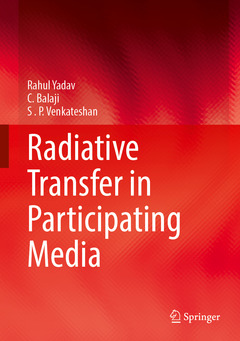Description
Radiative Heat Transfer in Participating Media, 1st ed. 2023
With MATLAB Codes
Language: English
Subjects for Radiative Heat Transfer in Participating Media:
Publication date: 09-2023
193 p. · 16.8x24 cm · Paperback
Publication date: 09-2022
193 p. · 16.8x24 cm · Hardback
Description
/li>Contents
/li>Biography
/li>Comment
/li>
Dr Rahul Yadav completed his PhD in Mechanical Engineering from IIT Madras in the year 2018 and served as an Institute Post Doctoral Fellow at IIT Kanpur for 2.5 years. He has more than 7 years of experience as a researcher in radiative heat transfer in participating media. He has around 6 publications to his credit in reputed international journals in topics related to computational radiative heat transfer and neural networks. He is a reviewer for several international journals. He has been awarded a pre-doctoral fellowship from IIT Madras and is also a recipient of Institute Post-Doctoral Fellowship from IIT Kanpur.
These books may interest you

Near-Field Radiative Heat Transfer across Nanometer Vacuum GapsFundamentals and Applications 143.27 €

Thermal Radiation Heat Transfer 154.17 €


